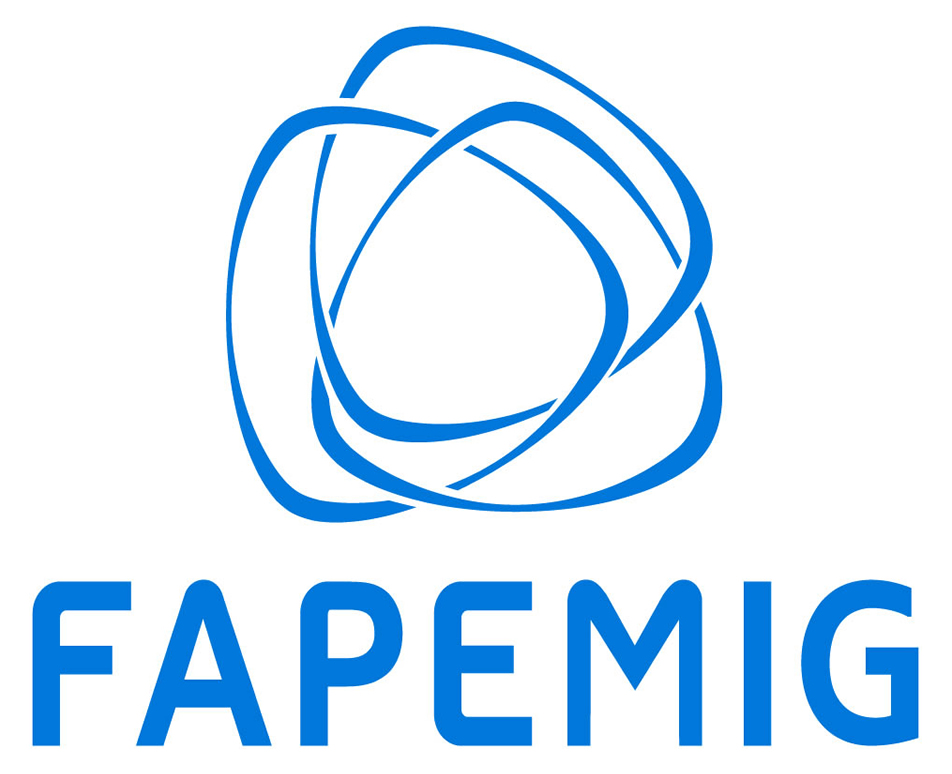Posters
| Category 'I'- Genetic Variation Analysis' |
| Poster - I01 |
| Corynebacterium pseudotuberculosis may be under anagenesis and biovar equi is forming biovar ovis: a phylogenic inference from sequence and structural analysis |
| Alberto Oliveira Junior, University of Minas Gerais, Brazil |
| Vasco Azevedo University of Minas Gerais, Brazil Pammella Teixeira, UFMG, Brazil Marcela Azevedo, UFMG, Brazil Syed Jamal, UFMG, Brazil Sandeep Tiwari, UFMG, Brazil Sintia Almeida, UFMG, Brazil Elaine Dorneles, UFMG, Brazil Dionei Haas, UFMG, Brazil Marcos Heinemann, USP, Brazil Andrey Lage, UFMG, Brazil Debmalya Barh, IIOAB, India Rafaela Ferreira, UFMG, Brazil Vasco Azevedo, UFMG, Brazil |
| Short Abstract: None On File |
| Poster - I02 |
| Identification of polymorphisms and mutations in the DNA sequence of patients deficient in DNA repair processes |
| Livia Maria Moura, University of São Paulo, Brazil |
| Carlos Frederico Menck, University of São Paulo, Brazil Huma Asif, University of São Paulo, Brazil Ligia Castro, University of São Paulo, Brazil Veridiana Munford, University of São Paulo, Brazil Karina Santiago, A. C. Camargo Cancer Center, Brazil Maria Isabel Achatz, A. C. Camargo Cancer Center, Brazil Pedro Galante, Hospital Sírio-Libanês, Brazil |
| Short Abstract: We identified five novel and one known mutations in XP patients after passing various filters (1000genomes, Hapmap). These mutations were found damaging after screening with SIFT and PROVEAN. Furthermore, we are in process of developing a user-friendly public domain interface that will facilitate the identification of mutations/polymorphisms in NGS data. |
| Poster - I03 |
| Network-assisted analysis of allele frequency differentiation between ancestries for GWAS hits. |
| Gilderlanio de Araújo, Federal University of Minas Gerais, Brazil |
| Lucas Henrique C. Lima, UMFG, Brazil Ana Paula Couto Silva, UFMG, Brazil Pedro O. S . Vaz de Melo , UFMG, Brazil Eduardo Tarazona-Santos, UFMG, Brazil Maíra Ribeiro Rodrigues , UFMG, Brazil |
| Short Abstract: This work presents a network-assisted analysis of allelic frequency differentiation of risk variants identified by GWAS. It is aimed at integrating molecular profiles and genetic disease associations in a disease-ancestry network. |
| Poster - I04 |
| Phylogenetic analysis of fimH in different Escherichia coli pathotypes |
| Leticia Matter, Universidade Federal de Santa Maria, Brazil |
| Luana Farias, Universidade Federal de Santa Maria, Brazil Agueda de Vargas, Universidade Federal d Sata Maria, Brazil |
| Short Abstract: This study comprises the phylogenetic analysis of fimH in different Escherichia coli pathotypes. Type 1 fimbria is the most important structure involved in the interaction of extraintestinal pathogenic Escherichia coli with the host tissues and fimH is the gene responsible for the adhesin tip of type 1 fimbria. |
| Poster - I05 |
| Mapping short reads may be harder in anomalous regions |
| Luciana Montera, Federal Unviersity of Mato Grosso do Sul, Brazil |
| Christiane Nishibe, Federal University of Mato Grosso do Sul, Brazil Nalvo Almeida, Federal University of Mato Grosso do Sul, Brazil Flábio Araújo, Embrapa, Brazil Bárbara Cezar, Federal University of Mato Grosso do Sul, Brazil |
| Short Abstract: Next-generation sequencing make us able to sequence millions of reads in a single run. Mapping these reads to a reference genome is used in data analyses involving variant detections and gene expression. This work aims to evaluate short read mappers when dealing with anomalous regions, where DNA compositional biases are detected. |
| Poster - I06 |
| Unraveling new mutations associated with Hereditary Breast and Ovarian Cancer (HBOC) |
| Jessica Plaça, Regional Blood Center of Ribeirão Preto, Brazil |
| Greice De Molfetta, University of Sao Paulo, Brazil Kamila Perroni, University of Sao Paulo, Brazil Vitor Ferraz, University of Sao Paulo, Brazil Wilson Junior, University of Sao Paulo, Brazil Nathália Cury, Estate University of Campinas, Brazil |
| Short Abstract: Applying exome sequencing genes have been discovered as associated with increased risk of cancers. Although pathogenic mutations have been correlated with HBOC, its phenotypic heterogeneity are not explained. This work found genes as, MUC4, HYDIN, TEKT4P2, MUC16 that could be related to the HBOC phenotype. |
| Poster - I07 |
| Rol of smallRNA in the excystment of Fasciola hepatica metacercariae |
| Santiago Fontenla, Facultad de Medicina, Universidad de la República, Uruguay |
| Nicolás Dell'Oca, Facultad de Medicina, Universidad de la República, Uruguay Pablo Smircich , Facultad de Medicina, Universidad de la República, Uruguay Maria del Mar Siles, Instituto de Recursos Naturales y Agrobiología de Salamanca, Spain José Tort, Facultad de Medicina, Universidad de la República, Uruguay |
| Short Abstract: Fasciola hepatica is responsibe for a worldwide distributed zoonosis. We studied microRNA expression in desencystment of, mammal infective, metarcercariae. Forty conserved miRNA families, as well as, fifteen novels were identified. Subtle differences between dormant and activated metacercariae were observed. Flatworm miRNA sequences are more divergent compared to other metazoans. |
| Poster - I08 |
| Literature data-mining for selecting potential functional candidate genes for gonadal hypoplasia and sperm defects in X-chromosome regions associated with these phenotypes by GWAS |
| Ana Paiva, UFMG, Brazil |
| Marcos Vinícius Gualberto Barbosa da Silva, Embrapa, Brazil Vicente Ribeiro do Valle Filho, UFMG, Brazil Guilherme Corrêa de Oliveira , FIOCRUZ, Brazil Guilherme Silva Moura, UFMG, Brazil Pablo Augusto de Souza Fonseca, UFMG, Brazil Daniel Jordan de Abreu Santos, Embrapa, Brazil Fernanda Caroline dos Santos, UFMG, Brazil Izinara da Cruz Rosse, UFMG, Brazil |
| Short Abstract: Literature data-mining for selecting potential functional candidate genes for gonadal hypoplasia and sperm defects in X-chromosome regions associated with these phenotypes by GWAS Paiva, A.E¹; Fonseca, P.A.S2; Santos, F.C2; Moura, G.S; Santos, D.J³; Rosse, I.C²; Oliveira, G.C4; Andrade, V. J.¹, Vale-Filho, V. R¹; Silva, M. V. G. B³; Carvalho, M.R.S² ¹ Escola de Veterinária, Universidade Federal de Minas Gerais, Belo Horizonte, 31.270-901, Brazil ² Departamento de Biologia Geral, Universidade Federal de Minas Gerais, Belo Horizonte, 31.270-901, Brazil ³ Embrapa Gado de Leite, Juiz de Fora, 36038-330, Brazil 4 Centro de Pesquisas René Rachou (CPqRR) - FIOCRUZ, Belo Horizonte- MG, 30.190-002, Brazil BACKGROUND: Genome-Wide Association Studies (GWAS) have been performed for several complex traits. Through this methodology it is possible to identify many markers and chromosome regions associated with the evaluated phenotype. However, despite the identification of these regions, GWAS may not find the causal variant of the assessed phenotype. This can be explained by the fact that the marker present in the genotyping platform used in the study is in linkage disequilibrium with the real causal variant. Therefore, further studies in candidate regions must be conducted in order to ascertain the real causal variants. As linkage disequilibrium can extend by long stretches in the genome, a large list of positional candidate genes can be obtained to be analyzed to search for causal variations. This way, the data mining methodologies stand out as a good alternative to select the best potential candidate genes. Here, we show the results of the literature data mining for candidate genes present in 3 candidate regions of X-chromosome associated by GWAS with gonadal hypoplasia and sperm defects in the Gir breed. The Gene Relationships Across Implicated Loci (GRAIL) software was used to perform the literature data mining. The input file for GRAIL analyzes was made using the gene name in Bos Taurus and the Gene ID of the homologous gene in human genome (all this data was extracted from NCBI). As thresholds of search, only articles published until August of 2012 were used. A supplementary search in more recent articles was developed for complementing the information of the genes significantly associated by GRAIL. RESULTS: Initially, the input file consisted for 97 genes. After the analyses, we were able to select seven genes. The keywords found significantly associated with the genes in GRAIL analyses were “Testis” and “Male”. These results must be associated with the pattern of expression or performance of these genes in males and in sex related biological processes. The complementary search in the literature showed that these genes encode for essential proteins in gonadal cell functions like mitosis, meiosis, sperm development and compartmentalization of the sperm cell. CONCLUSION: The strategy used in the present study was able to identify seven genes from a list of 97 genes previously associated with sperm and testis development process by GWAS. This methodology showed to be useful for selecting candidate genes from a large list of positional candidates found in GWAS. |
| Poster - I09 |
| Data-mining for selecting potential functional candidate genes for temperament of Guzerá cattle in a region of chromosome 1 identified by GWAS |
| Carolina Matosinho, Universidade Federal de Minas Gerais, Brazil |
| Fernanda Santos, Universidade Federal de Minas Gerais, Brazil Pablo Fonseca, Universidade Federal de Minas Gerais, Brazil Izinara Rosse, Universidade Federal de Minas Gerais, Brazil Maria Carvalho, Universidade Federal de Minas Gerais, Brazil Maria Pires, Embrapa Gado de Leite, Brazil Frank Bruneli, Embrapa Gado de Leite, Brazil Glaucyana Santos, Embrapa Gado de Leite, Brazil Maria Peixoto, Embrapa Gado de Leite, Brazil |
| Short Abstract: Zebu breeds was known popularly as “brave” breeds, due to having more aggressive temperament. The bovine temperament is an important characteristic in the animal’s well-being, and it affects the animals productivity. |
| Poster - I11 |
| Potentially Amplifiable Loci selection for polymorphic microsatellite markers generated from high-throughput DNA sequencing |
| Gabriel Yazbeck, Universidade Federal de São João del-Rei, Brazil |
| Rafael Sachetto Oliveira, Universidade Federal de São João del-Rei, Brazil José Mauro Ribeiro, Universidade Federal de São João del-Rei, Brazil Priscila Maria Freitas Viana, Universidade Federal de São João del-Rei, Brazil Fausto Moreira da Silva Carmo, Universidade Federal de São João del-Rei, Brazil Milene Barbosa Carvalho, Universidade Federal de São João del-Rei, Brazil |
| Short Abstract: Microsatellite DNA markers development was dramatically favoured with the advent of Next-Generation Sequencing techniques. We report the use of in silico selection for maximizing the chance of finding polymorphic microsatellite loci in a panel of tens of thousands of pontentially amplifiable loci generated by NGS (HiSeq 2000) for Neotropical fish. |
| Poster - I12 |
| A relational database for the investigation of functional SNPs from the 1000 Genomes Project |
| Sérgio de Alencar, Universidade Católica de Brasília, Brazil |
| Leonardo Fialho, Universidade Católica de Brasília, Brazil Gabriel Fernandes, Universidade Católica de Brasília, Brazil |
| Short Abstract: The rapid progress in high-throughput sequencing platforms has led to a huge increase in SNP discovery. Using dbSNP accession numbers as common identifiers, our database integrates information from several databases relevant to SNP functional studies, including OMIM, Ensembl, GeneCards, GWASdb and the 1000 Genomes Project. |
| Poster - I13 |
| Three SNPs identified by GWAS contribute significantly to reactivity in the Guzerá breed |
| Fernanda Caroline dos Santos, Universidade Federal de Minas Gerais, Brazil |
| Pablo Augusto de Souza Fonseca, Universidade Federal de Minas Gerais, Brazil Maria de Fátima Ávila Pires, EMBRAPA Gado de Leite, Brazil Izinara da Cruz Rosse, Universidade Federal de Minas Gerais, Brazil Frank Angelo Tomita Bruneli, Embrapa Gado de Leite, Brazil Glaucyana Gouvêa Santos, Embrapa Gado de Leite, Brazil Maria Raquel dos Santos Carvalho, Universidade Federal de Minas Gerais, Brazil Maria Gabriela Campolina Diniz Peixoto, Embrapa Gado de Leite, Brazil |
| Short Abstract: BACKGROUND: Bovine behavior is defined by the reactions that an animal presents when in contact with humans or other environmental challenges. It is composed of many endophenotypes. Among them, the most studied is the temperament which involves aggression, reactivity, passivity, physical movements, persistent habits, emotions, alertness and even curiosity. Temperament is a fundamental trait, because it reflects the fear felt by an animal while it is in human presence. Consequently, it influences directly on the animal-cowman relationship. When compared to calm animals, the angry ones exhibit lower weight gain, lower reproductive efficiency and lower milk production. Additionally, these animals produce meet of lower quality, are more susceptible to some diseases and are more frequently involved in work accidents. Therefore, ill-tempered animals increase the costs of herd maintenance and lead to losses of productivity. The definition of temperament is broad and subjective, leading to difficulties in its evaluation. Consequently, most of the studies, divide it in less complex components or endophenotypes, which can be evaluated quantitatively. Despite this, few studies on the genetics of temperament showed concordant results to date, partially due to the subjectivity of the behavior scoring resources. Reactivity can be less subjectively measured with devices such as REATEST®, which captures electronically the movements of the animal in a mobile cage for 20 seconds and attributes a score to it. This score reflects the intensity and the number of movements produced by the animal once catch in the mobile cage. Here, we describe the results of a genome-wide association study (GWAS) for reactivity, as assessed with Reatest, in a sample of 794 cows of the Guzerá breed, using reactivity data collected in 5 farms in Brazil. Measures of reactivity were taken in the rainy and dry seasons. The Generalized Linear Model (GLM) was used to extract effects of age, herd, weight and physiological status. The genotypes were obtained using the BovineSNP50 v2 DNA Analysis BeadChip. Association tests and quality control were performed using the SNP & Variation Suite software V7 Power Seat. RESULTS: Three SNPs were significantly associated to reactivity in Guzerá with highly significant P-values even after Bonferroni correction. P-values ranging from -log(p) 6.1 to 6.99 were obtained. Each one of the three associated SNPs explained almost 4.5% of the variance of the characteristic. One of these SNPs is located on BTA1 and the other two are located on BTA25. CONCLUSIONS: The identification of variants associated to reactivity may yield valuable information for understanding the biology behind this trait in bovine breeds. Given the importance of temperament for animal production systems using indicine breeds, generally assumed as ill-tempered animals, the lack of studies in the area, and the importance of the Guzerá breed for milk production systems in Brazil, these results stand out as an important contribution for bovine temperament research in Brazil. |
Posters
Poster Presentation List & Schedule
Odd numbers:
Poster set up: Day 1 - all day long
Take down: Day 2 after Poster Session
Size: Up to 90cm width x 120 cm height
Even Numbers:
Poster set up: Day 2 after Poster session and Day 3 until the first coffee break
Take Down: Day 3 after Poster Session
Size: Up to 90cm width x 120 cm height
| View Posters By Category |
- A) Bioinformatics of Disease and Treatment
- B) Bioinformatic tools and databases
- C) Computational aspects
- D) Comparative Genomics
- E) Education
- F) Epigenetics
- G) Functional Genomics
- H) Genome Organization and Annotation
- I) Genetic Variation Analysis
- J) Metagenomics
- K) Pathogen informatics
- L) Population Genetics Variation and Evolution
- M) Protein Structure and Function Prediction and Analysis
- N) Proteomics
- O) Sequence Analysis
- P) Systems Biology and Networks
- Q) Other
| Search Posters: |
TOP






